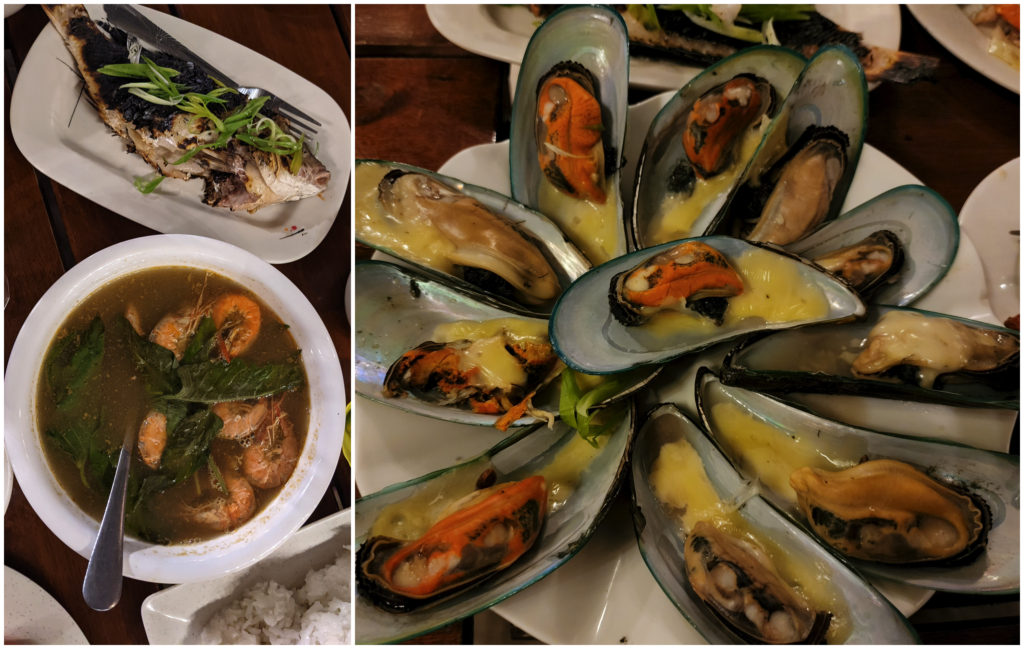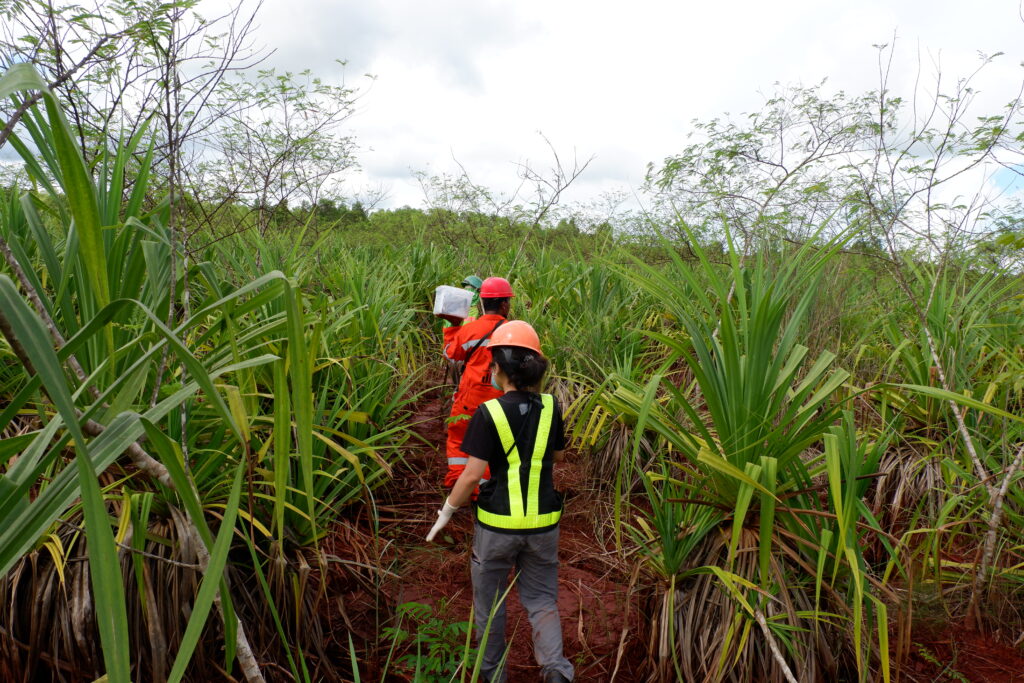Nickel is part of our everyday life, from the coins we have in our pockets, to the utensils we use in our dining tables, and the smartphones and laptops we are probably reading this with. Nickel laterite deposits are the world’s main source of nickel, accounting for 60% of the global nickel production. These are layered iron-rich deposits formed by weathering of ultramafic rocks in tropical to subtropical regions. Most are found in accretionary terrains (e.g., Indonesia, Philippines, New Caledonia) where upper mantle lithologies are transformed into ophiolite complexes. In nickel laterite deposits, valuable metals such as nickel, cobalt, scandium, and chromium are enriched across weathering profiles. Since these deposits are exploited through large opencast surface mining, valuable metals like chromium which could also be a toxic pollutant can leach into surface- and groundwaters and therefore, it is crucial to determine the processes that control its mobility.

On May 2022, I flew back to the Philippines, one of the world’s leading producers of nickel ore, to conduct a fieldwork in a nickel laterite mining area in the province of Palawan. I was joined by my postdoc supervisor, Jeffrey Paulo Perez and my collaborators from the University of the Philippines – National Institute of Geological Sciences, Dainty Clarice Rabang, Jhonard John (Jojo) Garcia, Mark Tan, and Rodrigo Narod Eco. Jeff and I were welcomed with amazingly fresh seafood – fish, shrimps, mussels! I must admit, this is what I enjoy most about fieldworks in the Philippines (aside from the science 😉).


The following day, we travelled by car for ~5 hours to reach the mining area. We started off with a safety training provided by the mining company. This is important to reduce risks and ensure our safety during our fieldwork. We then went to the mine‘s core storage facility to obtain samples from currently explored but unmined areas. Out of the hundreds of cores, we chose to collect samples from complete nickel laterite profiles. That is, those with an iron (oxyhydr)oxide-rich (e.g. goethite, hematite) limonite layer, a magnesium silicate (e.g. serpentine) dominated saprolite zone, and an ultramafic bedrock.


After our successful core sample collection, we moved on with our field sampling in the active mining and processing area. Finally, after almost 2 years of strict corona restrictions and of being a “lab rat“, I’m finally back on the field! We had to be careful because it rained the day before and laterites could be as soft as butter when wet. Laterites also leave a lasting red/brown stain on clothes since it contains iron (oxyhydr)oxides like hematite that are known sources for pigments. So we had to be extra mindful. As expected, we did not leave the area blemish-free but we left with a good number of laterite samples representative of the study site. We also collected water samples interacting with the laterites and measured in-situ physicochemical parameters such as pH, electrical conductivity, dissolved oxygen and others.

By the end of the week, we focused our sampling efforts to the rehabilited mine area. Here, they planted assorted native tree species and have managed to turn some areas into rice paddies and vegetable, fruit, and flower farms. The rehabilitated site not only provides food but also employment to the surrounding communities and indigenous peoples. Moreover, the rehabilitation effort invited back fauna that once thrived in the area before the mining and processing activities. It was such a pleasant experience to hear the birds chirping while we explore a once barren area now thriving with life. This is how responsible and sustainable mining looks like! I sincerely hope that this is the norm and not the exception.


Overall, the fieldwork was a success. I am very grateful that I had an opportunity to go back to the Philippines, work with awesome people in the academe and the mining industry, enjoy my dearly missed Filipino dishes, and most especially, pursue science in the hope of promoting responsible mining for a sustainable world. This was all possible many thanks to the support of TravelingGeologist.
Just recently, I brought my laterite samples to the European Synchrotron Radiation Facility to conduct atomic-scale investigations. I collected an exciting dataset and I can’t wait to process them!
![]() This work is licensed under a Creative Commons Attribution-NonCommercial-ShareAlike 4.0 International License.
This work is licensed under a Creative Commons Attribution-NonCommercial-ShareAlike 4.0 International License.
